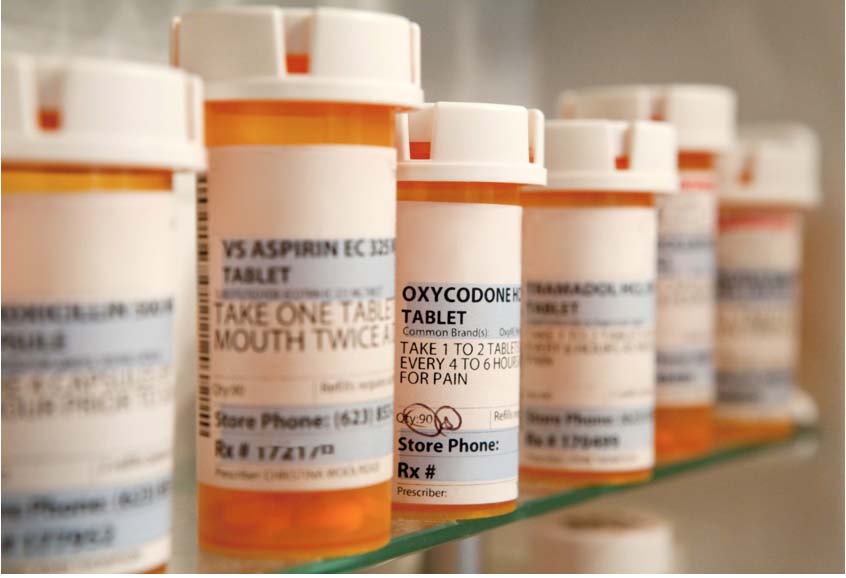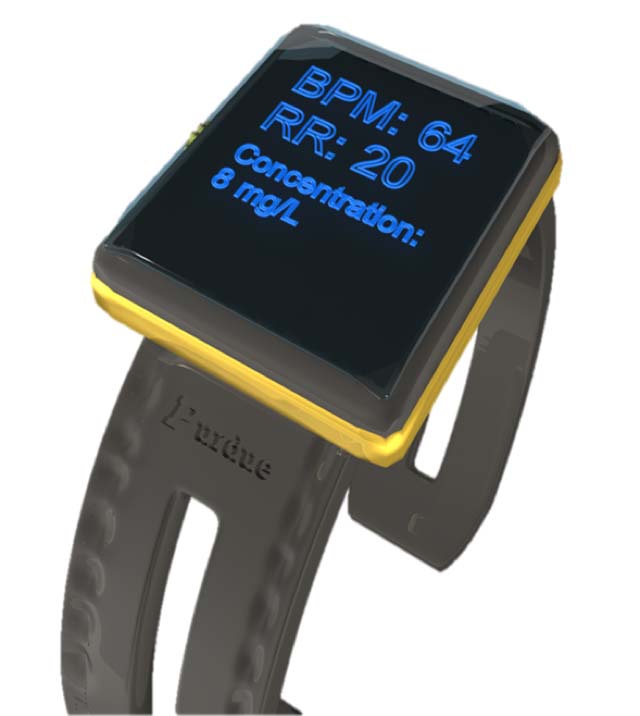Addressing the national opioid crisis
 “Here in the Weldon School, we’re developing electroceutical solutions — for example, devices that can detect an overdose and keep you breathing, keep you alive,” says Pedro Irazoqui, professor of biomedical engineering and director of Purdue’s Center for Implantable Devices. Imagine a device for addicts that could detect an overdose and automatically administer a dose of naloxone, an opioid antagonist that rapidly reverses an overdose.
“Here in the Weldon School, we’re developing electroceutical solutions — for example, devices that can detect an overdose and keep you breathing, keep you alive,” says Pedro Irazoqui, professor of biomedical engineering and director of Purdue’s Center for Implantable Devices. Imagine a device for addicts that could detect an overdose and automatically administer a dose of naloxone, an opioid antagonist that rapidly reverses an overdose.
Photo (top right): Opioids are a class of drugs that include heroin as well as legal prescription pain relievers oxycodone, hydrocodone, codeine, morphine, fentanyl and others.
Patient monitoring. In his Soft Bioelectronics Lab, Chi Hwan Lee, assistant professor of biomedical engineering, develops mechanically soft devices — smart patches that adhere to a patient’s chest and then remotely provide real-time data about respiratory status.
 Smart wearables. With support from the National Institute for Drug Abuse, Jacqueline Linnes and Hyowon ”Hugh” Lee, both assistant professors of biomedical engineering, are improving medication adherence by designing unobtrusive devices that help patients overcome their addictions. One technique uses temporary tattoo-based biosensors to noninvasively measure drug concentrations from sweat; another is a smart watch to measure physiologic responses to overdose — ranging from changes in heart rate, blood oxygen levels and respiration — and that could also call for help.
Smart wearables. With support from the National Institute for Drug Abuse, Jacqueline Linnes and Hyowon ”Hugh” Lee, both assistant professors of biomedical engineering, are improving medication adherence by designing unobtrusive devices that help patients overcome their addictions. One technique uses temporary tattoo-based biosensors to noninvasively measure drug concentrations from sweat; another is a smart watch to measure physiologic responses to overdose — ranging from changes in heart rate, blood oxygen levels and respiration — and that could also call for help.
Photos (middle and bottom right): Weldon School researchers Jacqueline Linnes and Hugh Lee are developing technologies for continuous biophysical monitoring for overdose detection.
Injectables. Kinam Park, the Showalter Distinguished Professor of Biomedical Engineering and professor of pharmaceutics is developing “injectables,” slow-release versions of drugs that help to block the effect of opioid use, which could help addicts quit the drugs they are dependent on. In addition, Park’s lab is developing a long-term, wearable device that can detect an overdose and also deliver naloxone upon detection of an overdose.
Weldon-affiliated leadership
 An institutional hub for the Purdue-wide effort is the Regenstrief Center for Healthcare Engineering. RCHE Director Paul Griffin, professor of biomedical engineering and industrial engineering, says the goal is to bring together a large group of Purdue researchers working on this problem, including those outside engineering, and create a comprehensive plan that funding agencies such as the National Institute on Drug Addiction might support.
An institutional hub for the Purdue-wide effort is the Regenstrief Center for Healthcare Engineering. RCHE Director Paul Griffin, professor of biomedical engineering and industrial engineering, says the goal is to bring together a large group of Purdue researchers working on this problem, including those outside engineering, and create a comprehensive plan that funding agencies such as the National Institute on Drug Addiction might support.
“In BME and RCHE, we want to stem this crisis in any way we can,” Griffin says. “We want to work with our clinical and public health partners in Indiana to make this a statewide effort. We hope to generate a technology-based, addiction-care research and translation effort that serves as a model for meeting national needs.”
The effort to coordinate research kicked off in September 2017, when RCHE co-hosted a seminar on the opioid crisis, Toward Better Lives and Stronger Communities — Bringing the Pieces Together. Jim McClelland, Indiana’s “drug czar” gave the keynote talk, and members of Indiana’s drug abuse task force attended the event. Purdue researchers, including Weldon School professor Jacqueline Linnes, presented their work and discussed how it fit into the state’s strategic plan for addressing substance abuse.
Marshalling partners
Other Purdue colleges are targeting the problem, including both Pharmacy and Health and Human Sciences, where researchers are developing opioid take back programs, data tools to track and map patterns in opioid overdoses, and assessing Indiana’s capacity for addiction treatment. (Currently, average wait times to see a substance abuse counselor are longer than a month.)
Work to coordinate this effort is underway. “We are rapidly engaging partners and getting people with complementary strengths aligned around this goal,” Griffin says. “There are some incredibly talented people already keenly involved. I have no doubt we’ll be successful.”
